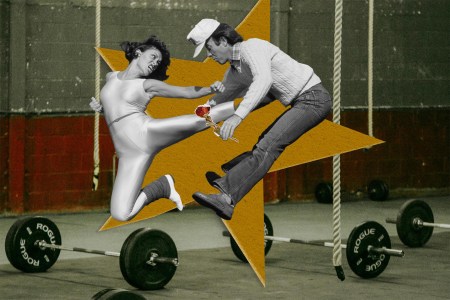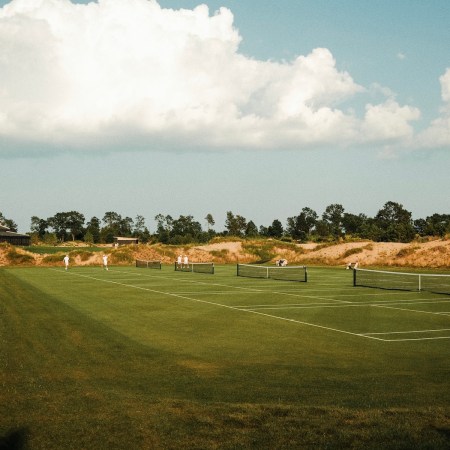Last month, as part of InsideHook’s series on the male friendship crisis, I wrote an essay on the potency of tennis partnerships. Simply put: adult men who play a weekly tennis match have got it made.
It’s rare to have such a reliable blend of fitness and social interaction — and it’s little wonder that a 25-year project published by the Copenhagen City Heart Study (CCHS) found racquet sports are most positively associated with life expectancy.
If you have a tennis partner, or multiple, keep doing what you’re doing. But if you don’t, don’t fret. There’s an extremely easy way to play whenever you want, use the sport to stay fit and perhaps build a bridge to playing regularly with other adults. I speak of the humble tennis wall.
Please Just Leave Women at the Gym Alone
Before we all flock there this month, let’s review the rules of being a respectful gym-goerWhat’s a Tennis Wall?
If the name sounds…slightly unfamiliar, that’s because it isn’t an official designation. I’ve taken some editorial license for the sake of exposition here. Tennis walls, or practice walls, are walls of 14 to 16-feet high, sometimes with painted lines — or lines applied via tape — with an adjoining enclosure, similar to one-half of a tennis court.
Cities and towns may designate these facilities as “handball courts.” In New York City, where I live, there are hundreds of handball courts across the five boroughs. I often do see groups of guys playing little handball tournaments within these cages (the sport’s a bigger deal here than most people realize), but the majority of recreationists are hitting a tennis ball against the wall, over and over again.
Great Way to Get Good
If you’re new to the sport, or returning to it, a tennis wall is an excellent tool for developing your game. In some ways, “playing” a tennis wall is a lot like showing up to a basketball court to shoot hoops — there isn’t really a wrong way to go about it. But it might help to follow these four guidelines.
- Start about 10-20 feet from the wall: In the same manner that you’d warm up with a partner within the service boxes, this is a low-stakes way to get a feel for the space. Once you’re feeling loose, back up to the far side of the cage and start really swinging through the ball.
- Let the ball bounce twice before reaching you: This is key for beginners, especially. You’re volleying with a slab of concrete — who cares about catching the ball on one bounce? This will make sure you stay true to your footwork and really hone in on your swing. Plus, it’ll lengthen your session.
- Try to get it at least three feet above the line: Assuming your wall has a line on it. Otherwise, you probably have a good mental idea of how tall a tennis net is (and where three feet above it would be). Just be careful not to sky it over the wall completely…one of the great indignities of practicing at a tennis wall.
- Alternate forehands and backhands: Once you’re really cooking, this is should be the endgame. No crazy drills. Just go five forehands, five backhands, repeat.
The Elusive Flow State
Some might accuse a session at a tennis wall of being a little boring. I’d accuse them of being too good at tennis. For most amateur adults, this is a fantastic method for tinkering with your swing path and footing, while checking a number of other wellness boxes.
Tennis walls get you outside, elevate your heart rate, encourage mobility and afford you solitude (which is different than being lonely — there’s a purpose to this brand of alone time).
A well-placed session can also activate the elusive flow state, defined by the great researcher Mihaly Csikszentmihalyi as: “A state in which people are so involved in an activity that nothing else seems to matter; the experience is so enjoyable that people will continue to do it even at great cost, for the sheer sake of doing it.”
The “cost” here, if there is one, might be the physical demands of scrambling around for a half hour. Or perhaps the psychological wound of flubbing another backhand in front of people. But that stuff ceases to matter when you work yourself into a healthy, humming rhythm.
It’s a delightful experience. A fresh can of Penn 1’s, plus Airpods in your ears (I think music works better than podcasts for this, by the way) and the world might just melt away. Give it a go this summer. If you play so much, you end up playing with partners by September, all the better.
The Charge will help you move better, think clearer and stay in the game longer. Subscribe to our wellness newsletter today.




















